#you can tell i learned to draw horses by watching the additional features on spirit: stallion of the cimarron a million times
Photo

rdr2 adventures pt 1: my awful orange queen Lady Tamarind
#i meant to sell the first horse i caught but i got attached in the time it took to ride to the valentine stables#she bucked me off like 5 times bc i cant read directions sorry mr morgan#i love her very much she is orange#rdr2#rdr2 horses#i havent drawn horses in SO long its all i used to draw as a kid its so nice to go back to my roots#you can tell i learned to draw horses by watching the additional features on spirit: stallion of the cimarron a million times#u know the one. Learn To Draw Spirit With James Baxter#i imagine arthur has to chase down miss tamarind bc she is a thief. perfect fit for a gang she is
33 notes
·
View notes
Text
Research: Draw Draw Draw Project.
Mike Parr Mark making artist
Parr's performances explore physical limits, memory and subjectivity. They often depict self mutilation or extreme physical feats.
Parr spent his childhood in rural Queensland, Australia. He was born with a deformed arm, and this physical feature is prominent within his art work.
Parr’s impression taking is a striking contrast, both emotionally and visually to his video/ installation work, composed of beautiful engravings featuring many different types of lines, using the mark making technique. Parr was fascinated with observation and the possibilities and responses of memory distortions.
Parr’s early work was designed to get a reaction from the audience, although he also focused on exploring issues of identity, memory and states of being. He particularly used his body as a performative tool, often using his prosthetic arm and testing his body’s physical limits through resistance challenges.
In the early 1980s he started a collection called “the self portrait project”, Parr’s self portrait studies first took the form of painstakingly hand drawn copies of performance photographs. Subsequent drawings acknowledge accidental blurs and smudges, with parr generating purposeful distortions through the introduction of a mirror and manipulating the grid.
Life after death collection, combines charcoal, pastel and acrylic on paper; it depicts the artist’s face over and over, in varying states of distortion, as though disappearing or disintegrating.
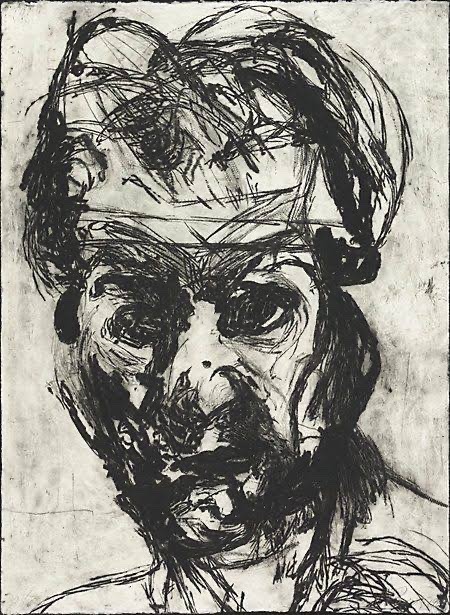
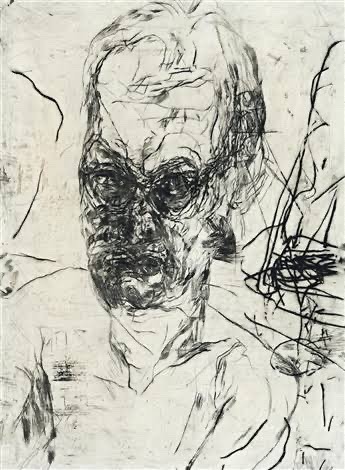
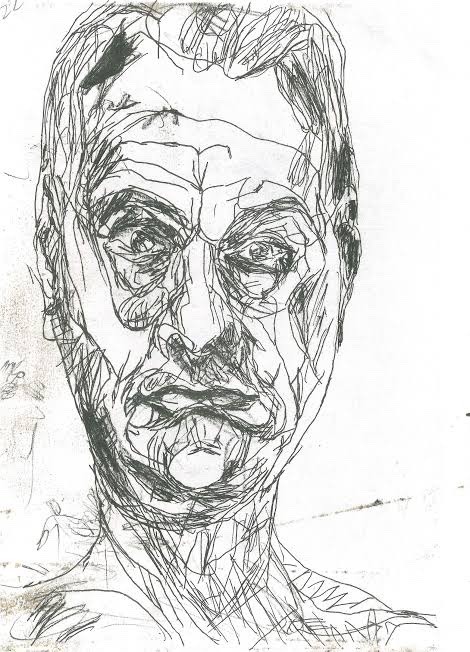
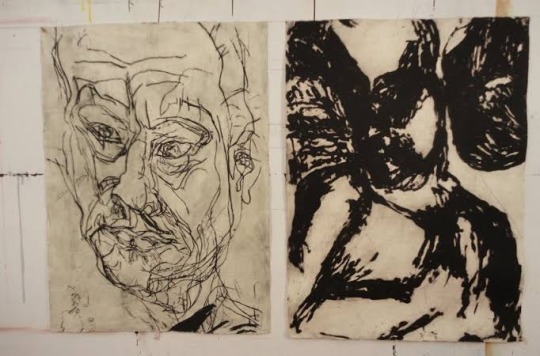
Paul Verdell
Is an American artist, who is specialized in drawing portraits of many different people that he can find as reference, by using different kinds of colors and lines with his crayons.
Verdell was born in Long Beach, California. At the age 13, his family moved to Fremont, Ohio.
Paul Verdell paints and draws a variety of people with plenty of personality. Like most artists, he has drawn since he was little, but didn’t make a real go of the medium until he was in his mid 20s. That he was decided to go back to school, enrolled in Bowling Green State university, and took a painting class when the first semester came around. Paul eventually developed his unique artistic style, by doing drawings, that him doesn’t consider that good, but he is comfortable with that style. His mark making technique is assertive, created with force and with energy. Paul’s work may seem as if it has loss control imbued within the lines, but his artworks are also vividly representative of the person or object he’s depicting; it’s delicate balance that he’s mastered without purposely pushing his style in a certain direction.
What I like most about his work, is his use of colors, with oil pastels , where he creates different tones on the skin of his characters, using the technique of mark making, which is perhaps more impressive, since it is a very different or unconventional technique for making portraits, that’s why it’s so interesting.
With time, he realized how much colour and expressiveness the textured medium adds to the canvas, and started to experimenting with more and more different types of colors.
The artist isn’t trying to make a statement with his work. In his words, “I’m just here to paint. The viewer can take whatever that want to take out of it”.
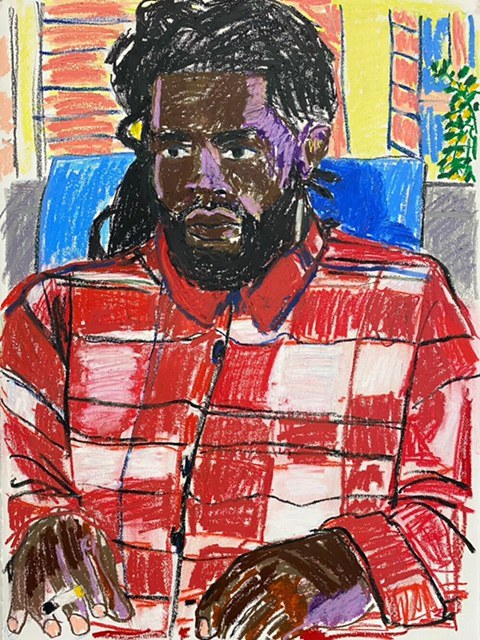
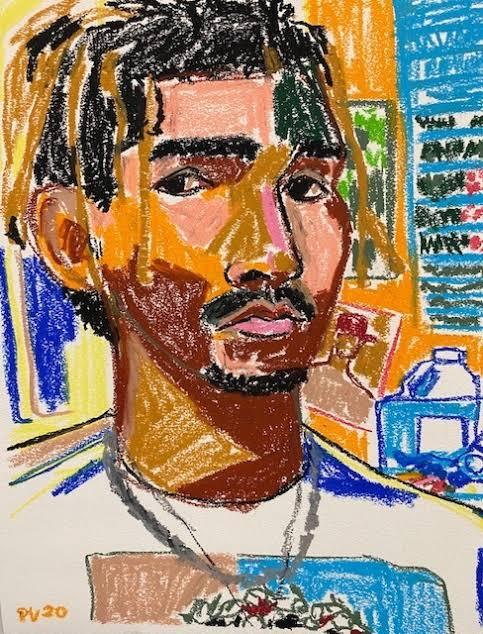
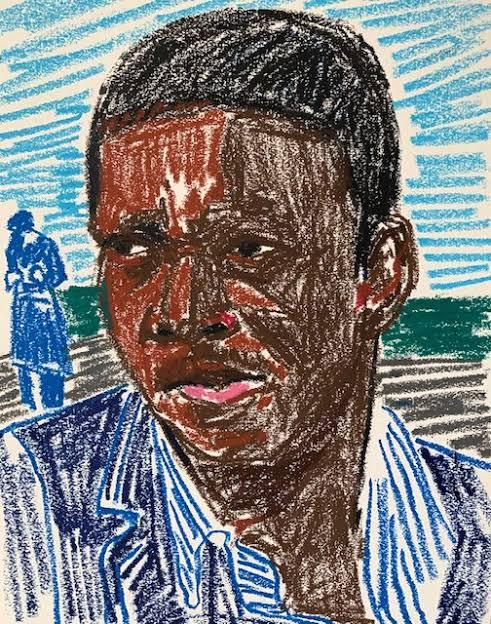
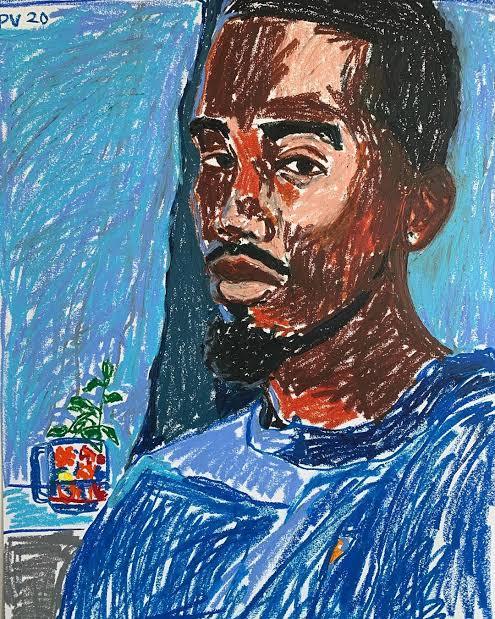
Saul Steinberg
Romanian artist by birth was one of the most important artists of 20th century. A designer and cartoonist in the publishing industry from 1936 to 1999, he spent a considerable part of the 20th century publishing in prominent magazines on the world stage, specially in the New York. The famous cover for the New Yorker that showed the view of the world according to the average American.
In his drawings, Steinberg’s lines seem to reinvent themselves as they progress, creating different kinds of shapes and sizes, sometimes using one single line.
Steinberg’s greatest contribution was his demonstration that the drawn lines is equivalent to thought. Indeed, Steinberg is rarely concerned with outward physical appearance and is much more interested in what and how people perceive what they see. His interest in the human psyche isn’t academic. His playful, childlike doodle quality maintains an elegant deftness that succinctly describes a wide range of subjects. His quirky way to draw, sometimes reminiscent of Dada art, also crossed over into the fine arts world.
much of the humor and mystery in his work occurs in the way he relates humanity’s lack of understanding.
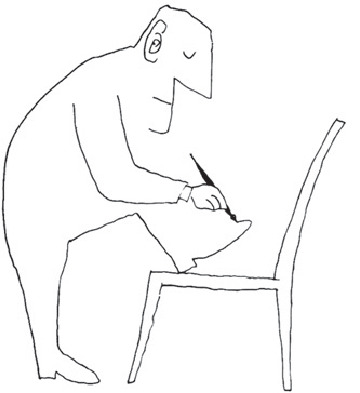
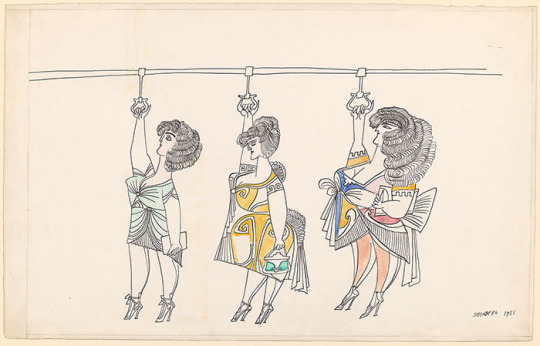
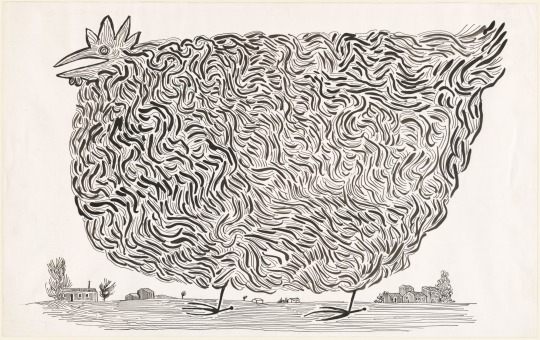
Urban Sketching
The drawings of urban spaces are gaining more and more admires, and this work certainly has a good baggage to please this audience, as it addresses a range of drawing techniques, which ranges from elementary theory to the more specific technique used by illustrators this modality.
Techniques and perspective tips combined with the composition tips presented in the work, are a combination that certainly makes all the difference when choosing and enhancing the scene that we will sketch, whether it be designing buildings, mansions, parks, people, animals, etc. the inclusion of the curved perspective is also another highlight, as it goes beyond the usual three vanishing points that the author usually address. The techniques, in this sense, are not many, but the author certainly selected those that generate the most impact. The watercolor for example, is his primarily tool, where he uses for the most of his drawings.
This book has been very useful for me for a long time, even today I use it as a reference. I always preferred to draw on my desk, with a reference photo. But I know that I need to let go, and learn to draw outside, just by watching, and trying to finish quickly.
I live in São Paulo for a while, and sometimes when I walk I always have a small sketchbook in my pocket and a watercolor kit. Sometimes I paint trees, sometimes buildings with interesting shapes and colors, from time to time some birds. Anyway, I learned a few things from this book, although I still prefer to draw in my studio, calm and do the drawing with all the time in the world, it is very important that I draw what is around me, so that I learn to train my eyes, in addition to drawing totally random things, which sometimes the internet cannot provide.

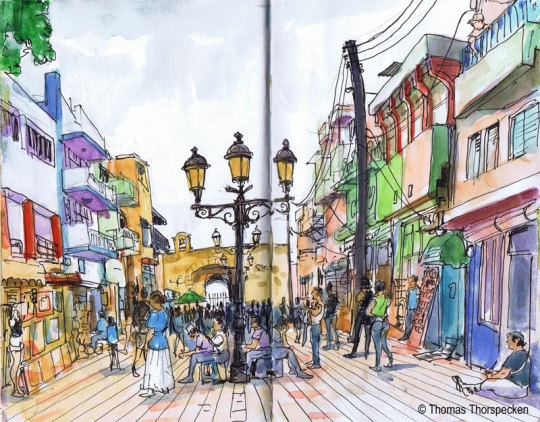
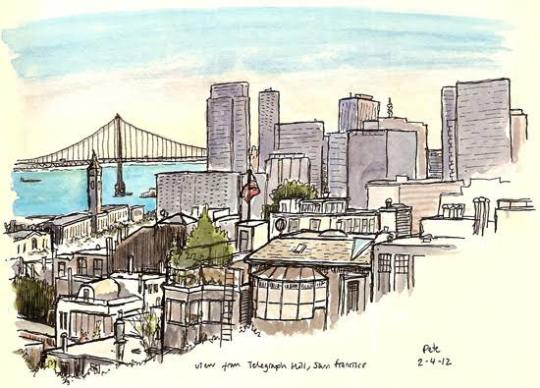
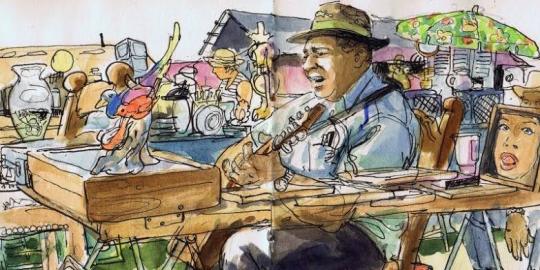
Alexander Calder Animal Sketching
Alexander Calder is a renowned sculptor and inventor of mobiles, and here he brings the simplicity of lines and spirit of movement to the art of animal sketching.
The purpose of the book is to help people like me to draw animals as we can see them.
Calder captures the emotions and attitudes of animals in a few quick lines, the person can quickly obtain a lasting groundwork in animal sketching.
This book really helped me, because I drew animal few times, and I was always thinking in the proportions and finalizing the drawing, but I learned that before doing that perfect drawing, I have to understand the movement and the poses, not necessarily making a masterpiece right in the begging, but train and have some fun on doing it.
This book contain several animal sketches, like cats, dogs, deers, cows, horses. All this animals doing different poses and actions for training.

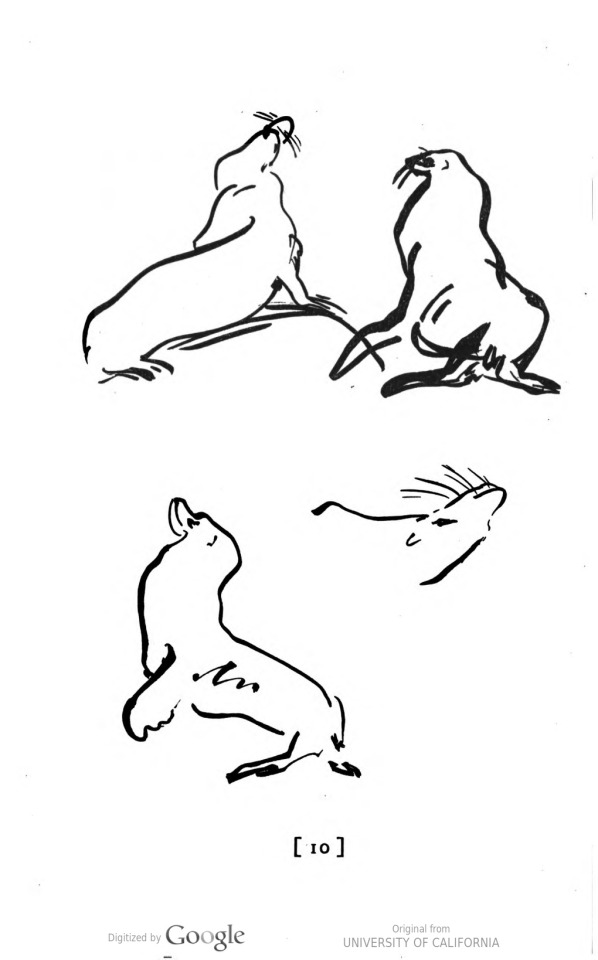
Juan Linares
Juan Linares is a Spanish illustrator and painter, who specializes in drawing mainly different environments (Urban sketching), from streets to buildings with a different style of architecture. He mainly understands the perspective and depth of the environment. Uses various types of materials, such as acrylic markers, even alcohol-based pens. But his preferred tool, of course, is watercolor, which he always uses, when walking in the streets of his city Barcelona, where he paints narrow streets, with the small bistros, from the famous La Sagrada Familia church made by Gaudi.
Linares says, that he’s been drawing professionally since 1984. Starting his architecture studies. He drew in sketchbooks, notebooks, and in blackboards. He has a preference in drawing food and buildings.
What I like about Linares's drawings, is the way he can put light and shadows, besides the buildings being magnificently well done, very carefully and calmly (he explains that if you are drawing in some environment it is good to be calm, and patience without feeling the need to finish quickly).
He has traveled to some places in the world, including Brazil itself, where he sketched the museum of Niterói, designed by the architect Oscar Niemeyer, besides the Christ the Redeemer in Rio de Janeiro.
Juan Linares is a great artist, and I really admire the passion he puts in each of his drawings. And I wish to see more of his works, of famous architectures of the world.
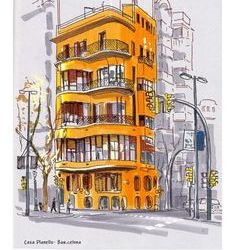




Laura Carlin
Laura Carlin was born is Glastonbury, England. She studied at Buckinghamshire university, followed by The Royal College of Art.
Laura has illustrated many children’s books for Walker Books Ltd, including The Iron Man by Ted Hughes which won many awards, specially praising for Laura’s illustrations.
She has also drawn for a whole host of publications including The New Yorker, The Guardian and Vogue, among many others.
Laura’s works frequently touches on emotionally complex subjects and adult themes of loss , social injustice and environmental change.
As an illustrator Carlin has worked with several contemporary children’s authors including Nicholas Davies for her book The Promise about a young thief whose life has changed after stealing a bag of acorns and Michael Morpurgo’s book The Kites are Flying ! , a story centered on the conflict between Israel and Palestine.
One of the reasons why, I like so much her work, it’s because she has the ability to convey a plethora of emotions through the smallest details on the pages, combining with childlike drawing style and with a sentimental narrative, it’s very brave of her, to do books for children, with such difficult themes to explore.
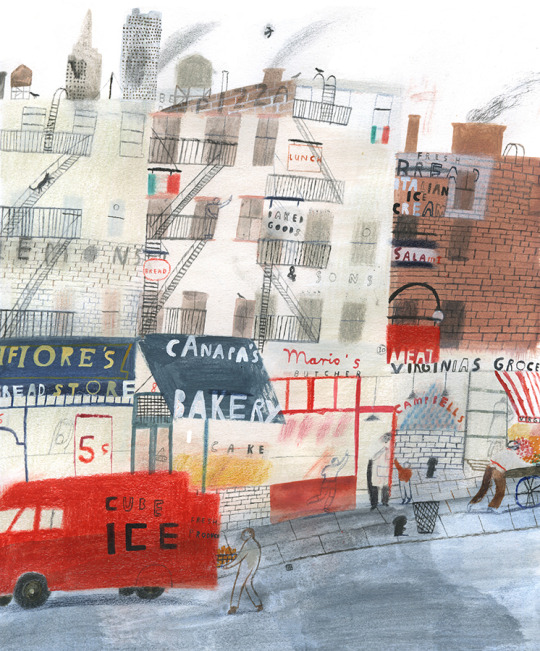
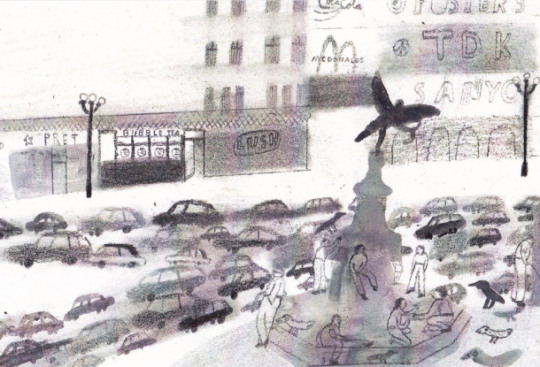
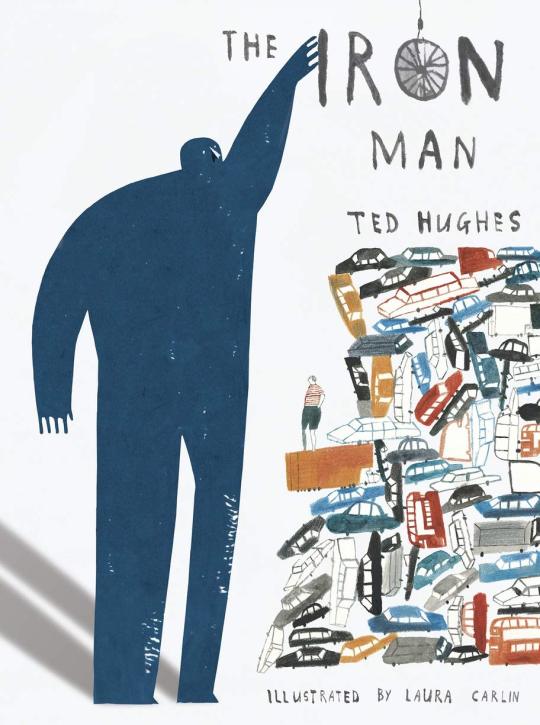

Research: Show and Tell Project
Frank Frazetta
Frank Frazetta was an American illustrator and painter, who became extremely well known for having defined the look, of the character Conan the Barbaro, created by Robert. E.Howard in the 1930s.
Frank was born in Brooklyn, New York, and from an early age he showed his skills as an artist. As a child, at the age of 8, he studied at a small art school called Brooklyn Academy of Fine Arts.
His illustrations are inspired by the great painters of the late 18th and 19th centuries, who portrayed mythological legends.
For me it’s not just the wonderful color palette he used, the wild and original streak or the phenomenal technique he developed. Of course, these things are fundamental, but in my understanding, the most important thing is that he defined practically everything we know in terms of visuals, mainly in the fields of fantasy, witchcraft, barbarism and even a little bit of science fiction.
His paintings defined some characters that we know today, like Tarzan and John carter, that he brought a new life to the characters of Burroughs, not to mention the images of Conan, who made the illustrator famous. Imagine that before him, the Sword and Sorcery look did not exist. The Conan that appeared on the covers of books since the 30s of the last century gets to laugh today. Frazetta was the first to understand the world created by Robert E. Howard.
The reason I chose frazetta as a reference is because I like fantastical worlds so much, and I love to learn anatomy, and frazzetta understood a lot of that, with his extremely vibrant colors, and extremely strong characters, who faced terrible monsters, who disturbed the peace.

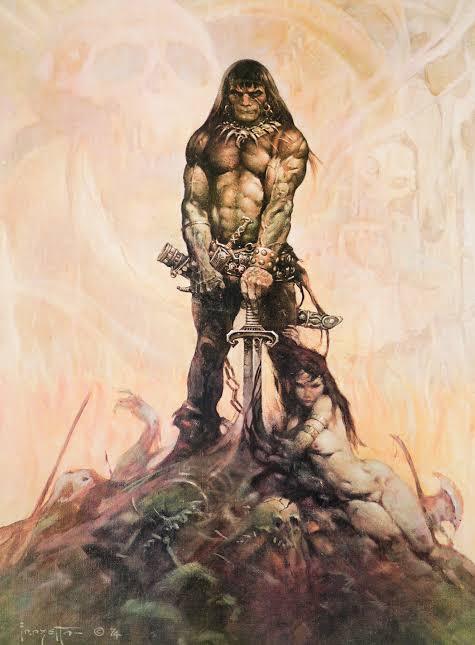
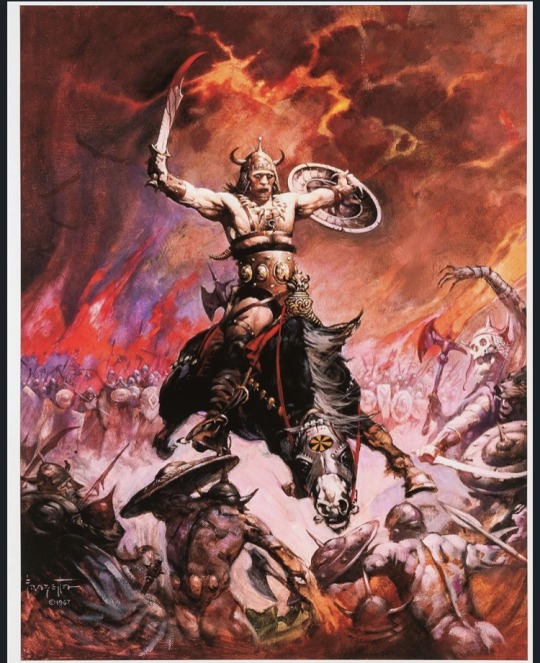

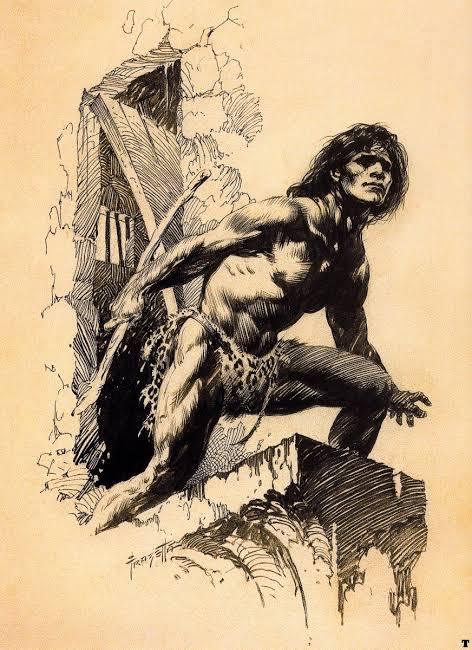
Claude Monet
Claude Monet is the main and most dedicated representative of the impressionist movement. He always preferred paintings outdoors, regardless of weather conditions,in order to capture all the effects of nature. Early in his career he was misunderstood, especially by his family, resulting in financial difficulties for years. Only around the age of 40 did he start selling his paintings, he died as a rich and well known artist.
He started to paint from a very young age which earned him some money, selling caricatures, with the money he bought painting materials. In 1858 he met Eugene Boudin, a landscape painter who encouraged him to paint outdoors. The following year he moved to Paris to specialize his techniques. At that time Paris attracted the most varied artists in the world and there Monet met Camille Pissarro and Manet among other avant-garde artists.
In 1874, the first impressionists exhibition was held in Paris, featuring works by Monet, Renoir, Degas and Cezanne. The term Impressionism, derives from Monet’s painting called Impression, Sunrise (1872).
It was the art critic Louis Leroy to call the artistic movement: Impressionism. It was a way of understanding this type of painting that did not follow the standards established by the academy and its realistic paintings.
When looking closely at an impressionist work, you see only separate brushstrokes that look like blotches without contour. Seen from afar, the brushstrokes organize for our eyes creating shapes and luminosity.
His works of art followed, as a main theme, the landscape of nature.
He worked harmoniously with colors and lights, creating beautiful and strong images. In the artistic context, is good to mention the series of paintings that he made on the Cathedral of Rouen (1892-1894), where the artist portrayed the constructions at different times of the day, with variations in brightness.
Monet and the impressionist artists, were no longer interested in themes related to the nobility, to the church, or to producing portraits that were true to reality. They wanted to see the painting as work in itself.
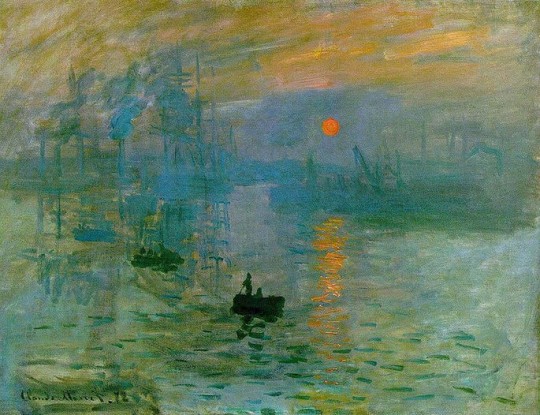

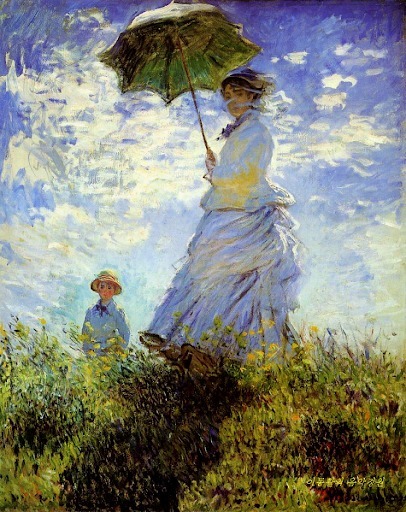
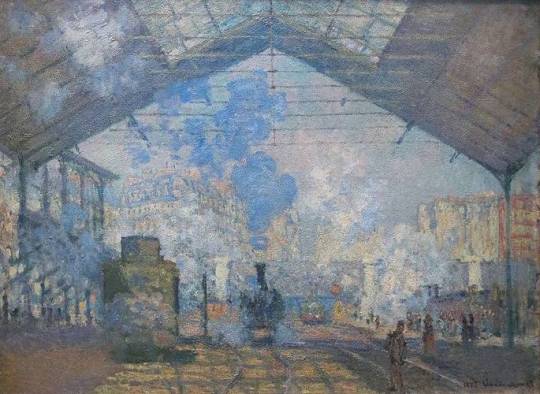
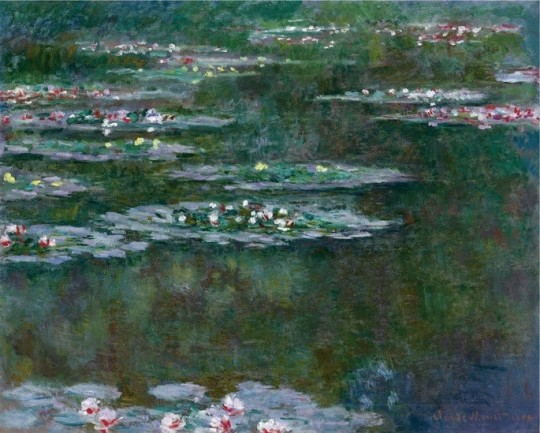
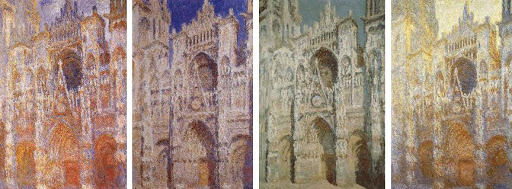
Ridley Scott
Ridley Scott is one of the most well-known film directors of all time. He made several films of different genres, but his most well-known genre is science fiction, making films like Alien, Blade Runner, The Martian and Prometheus.
But before before of being a director, Scott was applying to the Royal College of Art, one the most acclaimed art colleges at the time, to be a designer.
Scott always liked drawing , but he saw that he had no way of being a painter. His teachers always argued that his paintings were more illustrations than paintings.
So he saw that the Royal College of Art, had a particularly strong Graphic Design Department, which would give him a more specific creative target and a broader canvas. He was accepted by the college, and started his studies in 1958 and finished in 1961.
In his words, he considered design college to be extremely competitive, everyone in his class tried to compete with each other to see who was better. And Scott realized that he needed to fight hard to be among the best. “It could be very competitive, with no much being given away and everything kept close to you chest. You observed all the time, watched everyone else did and tried to do better and be the most original”.
Since graduating, Scott has said that he has become extremely perfectionist, and has tried to do as much of his work as a designer and a filmmaker in the best possible way.
After working as a set designer, and director in British television, he began in 1967 to direct commercials, eventually numbering more than 2,000 for his own company. His attention to visual stylization in his commercials, including distinctive atmospheric lighting effects, continued into the feature films that he began to directing in 1977.
In 1979 Ridley Scott releases what is considered his debut film and his masterpiece, the movie Alien. Starring Sigourney Weaver as Ellen Ripley, Scott is credited with having a heroine take point in the ensuing hunt aboard the Nostromo spaceship. Scott’s paintings and illustrations are close to pointillism with tiny points that result in images of high definition and extreme detail.
A highly detailed approach marks his style. His eye for composition, lighting, and design seems to explain his ability to visualize a movie in his mind. He claims to have and eidetic memory and the ability to recall images with high precision.
https://www.youtube.com/watch?v=tjD82nKybUA


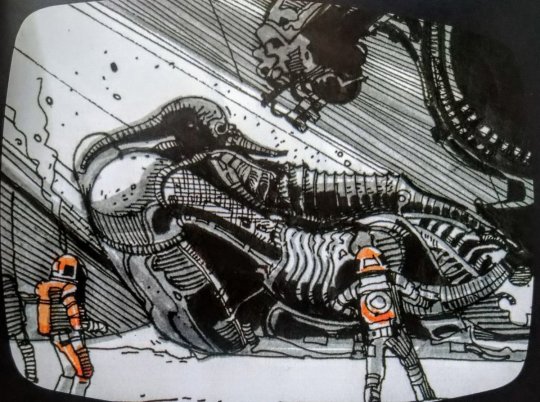
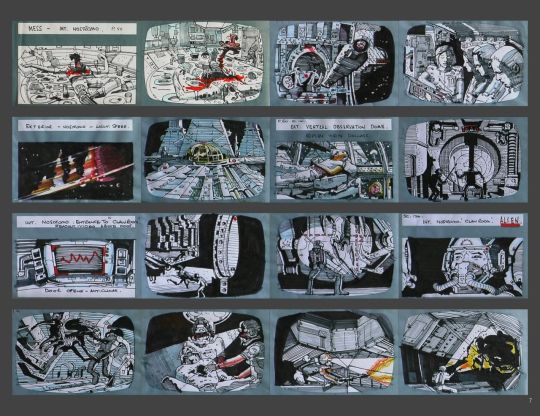
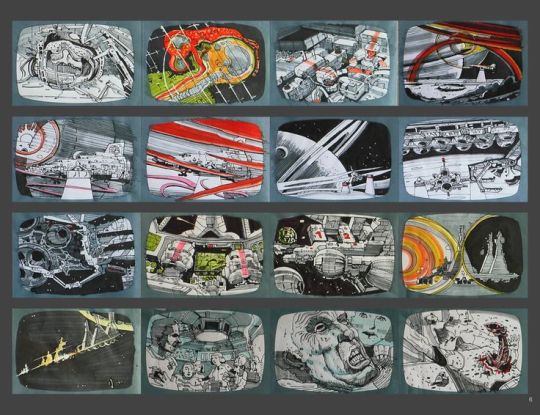
Roxie Vizcarra
Roxie Vizcarra is an artist, who worked as the senior illustrator of Rockstar Games, who worked closely on the iconic Grand Theft Auto v and Red Dead Redemption 2 marketing campaigns.
The Peruvian-American artist was just out of college- she earned her bachelor’s degree from the Parsons School of Design in New York- when she was approached by Rockstar games in 2009.
Vizcarra was Rockstar game’s first female illustrator. The first project she worked on was Grand Theft Auto IV: Liberty City.
The first game Vizcarra worked on since its inception was the original Red Dead Redemption, released in 2010.
Vizcarra draws her art from spaghetti western movies and holds the work of “Golden age” illustrators such as Bob Peak and Robert McGinnis in high regard.
For most of her career, Vizcarra’s process began by drawing in sketchbooks (she’s a fan of traditional ink), which she then uploads and adds digital colors through Photoshop.
However, for a year or two she has been using Procreate on the IPad, which is very flexible for her purposes. She also takes references photos when she doesn’t have a clear idea of what the illustration should look like, either of others or of herself, in the desired pose.
Vizcarra shows unusual humility; she insists on not taking credit for herself and repeatedly refuses to attribute specific drawings to one person or another, or to go into the why’s and how’s of illustrations.
Vizcarra’s work is really interesting, and it explores the more of the side of markenting. In making covers and posters extremely flashy for the public, and in addition to using references to posters from old western movies, maybe that is what attracts me the most. I really like the western theme, and I always liked the way she created the poster for games like red dead redmeption 2 and GTA, with extremely warm colors, with references of very old artists, who perhaps few remember, but she always tries to put some of them into her work.

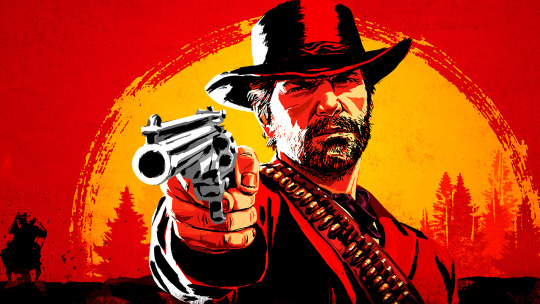

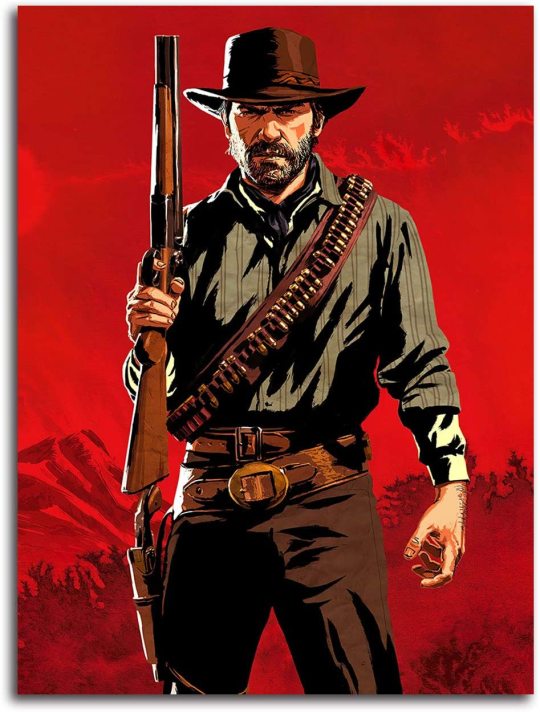


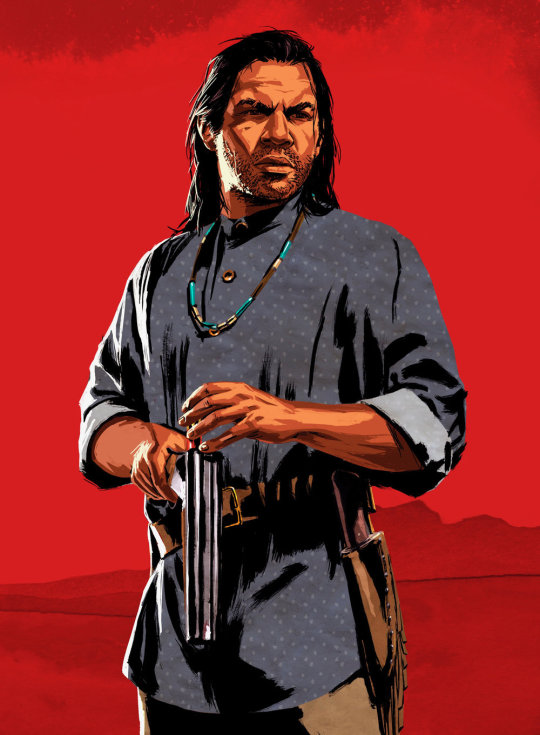
Show and Tell Digital Collage research
Terry Gilliam
Is a famous American-British director, screenwriter, animator, artist and comedian, and who is known for directing and acting in some of the films of the English comedy group Monthy Python, in addition to making films that are extremely difficult to understand, as if madness were the main character in all his films.
Terry Gilliam began his career as an animator and photographic cartoonist; one his first jobs was for the Help ! Magazine.
Gilliam preferred cut-out animation, which involved pushing bits of paper in front of camera instead of photographing pre-drawn cels. The process allows for more spontaneity than traditional animation along with being comparatively cheaper and easier to do. He also preferred to use old photographs and illustrations to create sketches that were surreal and hilarious.
Gilliam was one of the founders of Monty Python. At first, he was accredited as an animator ( his name appeared separate from the remaining 5 members in the credits), later he also joined the series as an actor. Their animations linked the sketches of the program and defined the group’s look in other types of media ( such as Vinyl discs, book covers and the opening sequence in the films).
Gilliam polished a unique style, created fantastic worlds, worked with great stars for the biggest studios, and sweated tight budgets to execute his vision, not always sharp but always brilliant.

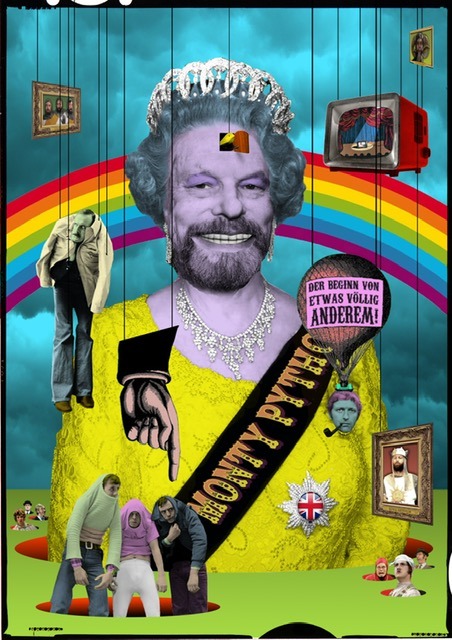

Caco Neves
Caco Neves uses digital collage as a platform, he created, for the past 10 years, illustrations for zines, magazines, advertising pieces, vignettes for TV and the web and, more recently, he was summoned by the Vogue art team to create the cover for the Vogue Experience 2017.
After spending a season in London, where he learned to give movement to his creations with the techniques calls Motion Collage, Caco returned to Brazil and, in a moment of creative rest, when he was creating for himself and not for a client, worked on a psychedelic vignette, then he sent it to MTV, to see if they liked the style, and they asked to use this commercial but to make some adjustments.
For Caco, the success of digital collage in the last decade is a reflection of the time we live in. “ The internet brought access to images- digital collections became public- and photoshop became popular.”
He has worked for several national and international companies, and his work is very dear to his collaborators, very much for his creativity, and for the choice of technique.
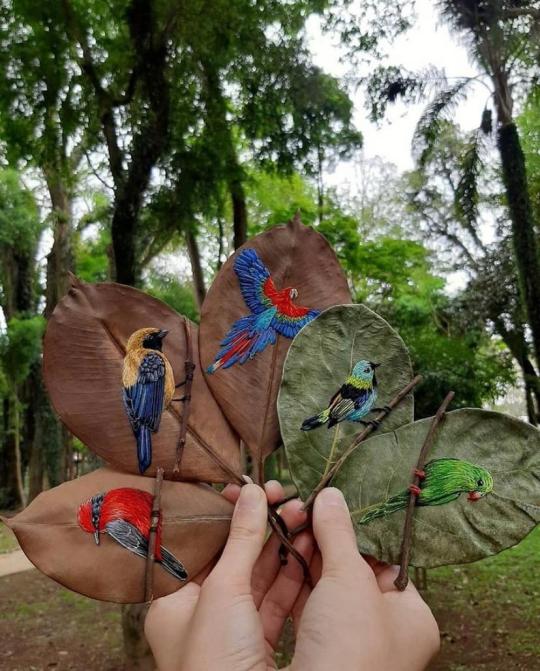

0 notes
Photo
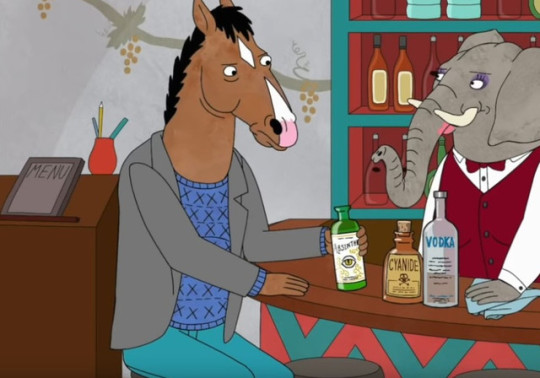
New Post has been published on https://shovelnews.com/the-creator-of-bojack-horseman-comes-from-a-home-of-funny-jews/
The creator of 'BoJack Horseman' comes from a home of funny Jews
Jerusalem draws in animation bigwigs from all over
Antisemitism czar slams German cartoon as ‘Nazi propaganda’
Share on facebook Share on twitter
Bojack Horseman. (photo credit: YOUTUBE SCREENSHOT)
X
Dear Reader,
As you can imagine, more people are reading The Jerusalem Post than ever before. Nevertheless, traditional business models are no longer sustainable and high-quality publications, like ours, are being forced to look for new ways to keep going. Unlike many other news organizations, we have not put up a paywall. We want to keep our journalism open and accessible and be able to keep providing you with news and analyses from the frontlines of Israel, the Middle East and the Jewish World.
As one of our loyal readers, we ask you to be our partner.
For $5 a month you will receive access to the following:
A user experience almost completely free of ads
Access to our Premium Section
Content from the award-winning Jerusalem Report and our monthly magazine to learn Hebrew – Ivrit
A brand new ePaper featuring the daily newspaper as it appears in print in Israel
Help us grow and continue telling Israel’s story to the world.
Thank you,
Ronit Hasin-Hochman, CEO, Jerusalem Post Group
Yaakov Katz, Editor-in-Chief
UPGRADE YOUR JPOST EXPERIENCE FOR 5$ PER MONTH Show me later
While growing up in Palo Alto, Raphael Bob-Waksberg was a serious consumer of popular culture. He would watch TV for hours on end and view movies over and over until he memorized them. In particular, he was a huge fan of “The Simpsons.”
“We used to talk about Bart and Lisa at the dinner table as if they were real people,” said his mother, Ellen Bob.
Nowadays, the conversation around American tables is more likely about “Bojack Horseman” a successful Netflix animated series created by Bob-Waksberg. The show’s fifth season premiered on Sept. 14.
In addition, Comedy Central recently acquired the rights to reruns of “BoJack Horseman,” reportedly making it the first Netflix show to enter TV syndication in the United States. Season 1 reruns are scheduled to begin on Sept. 26.
The show is an adult drama-comedy set in an imaginary Hollywood populated by humans and anthropomorphized animals (the eponymous main character, BoJack Horseman, has a horse’s head and man’s body), and has catapulted Bob-Waksberg’s career to new levels in the real Hollywood.
In addition to his work as head writer and showrunner for “BoJack,” Bob-Waksberg is developing new shows for Netflix and Amazon. He’s also writing a book of short stories scheduled to be published next year by a major imprint.
The 34-year-old’s success has come as no surprise to family, friends, rabbis and teachers in the Bay Area who nurtured his creativity and independent thinking from an early age.
JPOST VIDEOS THAT MIGHT INTEREST YOU:
“I think Raphael was really headed in that direction since his teen years,” said family friend Nechama Tamler, a longtime Jewish educator who early on recognized his writing and performing talent.
Simultaneously sad and funny, but mostly funny, “BoJack” is a satire about the elusive nature of happiness. It has gained praise for its intelligent writing that does not adhere to the typical sitcom formula, and there is no emotional closure at the end of each episode. It’s an ongoing, frustrating effort for characters to learn and grow from their mistakes, and to grapple with the meaning of existence.
The titular character, the deeply flawed BoJack Horseman (voiced by Will Arnett of “Arrested Development”), struggles after his successful acting career flounders. Fans still recognize BoJack for his role as a young, single guy who adopts three orphans in a popular late 1980s sitcom called “Horsin’ Around.” However, now he’s a 50-something depressive addicted to alcohol and drugs. Critically, he lacks the required self-awareness to stop from hurting himself and those closest to him.
When Todd (voiced by Aaron Paul of “Breaking Bad”), a slacker who lives on BoJack’s couch and suffers the equine actor’s constant indifference, has had enough of BoJack’s apologies, he yells at him: “You can’t keep doing shitty things and then feel bad about yourself, like that makes it OK. You need to be better … You are all the things that are wrong with you. It’s not the alcohol, or the drugs, or any of the shitty things that happened to you in your career, or when you were a kid. It’s you.”
The message is that there are no easy answers, and that making amends takes hard work. Ultimately, actions speak louder than words.
Bob-Waksberg’s father, David Waksberg, recognized the Jewishness of this value immediately.
“When a friend asked me about it after the first season, I said it was about teshuvah,” he said, using the Hebrew word for the Jewish concept of repentance.
For his part, Bob-Waksberg wasn’t quite sure how to answer when asked whether his Jewish identity influences his writing, and in particular the melancholic humor of “BoJack.”
“Asking me that question is like asking a fish how much being in water has affected it,” he said.
Bob-Waksberg grew up in Palo Alto in the late 1980s and 1990s with two younger sisters, Becky and Amalia, in a family that was — and still is — very involved in the Jewish community. David Waksberg worked to free and resettle Soviet Jewry, and is now the CEO of the San Francisco-based Jewish LearningWorks, the central agency promoting Jewish education in the Bay Area. Ellen Bob ran a Judaica store (Bob and Bob) with her mother for 26 years, and in 2011 joined Congregation Etz Chayim as executive director.
Humor was always central to life at home.
“We like to laugh … big belly laughs,” Ellen Bob recalled. “David is a great storyteller and joke teller. He would regale the kids with routines from Steve Martin, Woody Allen … and songs from Tom Lehrer. I’m more of a wisecracker. Like my son, nothing gives me more pleasure than to make someone laugh.”
She said she is always pleased when her son makes a point of telling his interviewers (and there are many) that his was a happy childhood, and that BoJack’s family is not based on his family of origin.
“I’m delighted to be known as Raphael’s mother, as long as people don’t think BoJack’s mother is based on me,” she said, alluding to Beatrice Horseman (Wendie Malick), a neglectful and abusive heiress to a sugar cube company who appears primarily in flashbacks.
In looking back on his childhood and adolescence, Bob-Waksberg pointed to Mid-Peninsula Jewish Community Day School (now Gideon Hausner Jewish Day School), the Palo Alto Children’s Theatre and the Gunn High School drama program as other outlets where his creativity was rewarded.
“In school, there were a handful of teachers who understood me. And there were many who didn’t. I didn’t make it easy for them,” he joked.
Rabbi Sheldon Lewis, rabbi emeritus at Congregation Kol Emeth in Palo Alto, recalled Bob-Waksberg as “not an easy student” in the religious school.
“It was because he was so clever and beyond his years in creativity, humor and mischief,” he said.
Despite having grown up in the Palo Alto academic pressure cooker, Bob-Waksberg was never saddled with any expectation that he would become a doctor, lawyer or founder of a startup. His parents were always supportive of his creative leanings.
“It was pretty clear to me that he was going to need to figure a way to make a living through the arts because it was the only thing he knew how to do,” his mother said.
Like “BoJack Horseman,” the shows Bob-Waksberg is writing for Netflix and Amazon are also animated. It’s not a format the graduate of Bard College in New York originally planned to work in when he moved to Los Angeles after trying his hand at comedy writing in the Big Apple.
In his spare time, he collaborated off and on for a decade with his high school friend, illustrator Lisa Hanawalt, on a cartoon featuring human-like animals, which became the basis for “BoJack.” Hanawalt is now a production designer and producer for the show.
The program was in development with Michael Eisner’s company, Tornante, for a couple of years before it went to Netflix, which wanted it to be put into quick production for a summer 2014 premiere.
“I didn’t know I would get into animation. I was initially writing for live action, but ‘BoJack’ is the one [project] that went,” Bob-Waksberg said.
He said this decade has been an exciting time to be working in animation, and that he has an appetite for more.
“Animation is a format, not a genre,” Bob-Waksberg said. “There is a lot to do in animation for adults. What has been done in the past has been limited in scope and has lived in the shadow of ‘The Simpsons.’ The new shows I am developing are about women, which is really fresh.”
Much has changed for Bob-Waksberg in the past few years. On the personal side, he was married a year ago.
Bob-Waksberg and his wife have not yet found a synagogue in Santa Monica that feels like the right fit for them, but they welcome Shabbat on Friday evenings at home.
“My wife grew up more observant than me, so she has been a good influence and has helped me reconnect to Jewish practice,” Bob-Waksberg said. “We even had benchers [blessing booklets] at our wedding, which surprised my parents.”
Professionally, Bob-Waksberg has become more aware of his role and responsibility in the pop culture universe. First, he checks himself as to whom he hires, ensuring that he brings in writers and cast members of diverse backgrounds.
Additionally, he doubts he would now make some of the jokes he made about anti-Semitism, the Holocaust and Nazis in the show’s first season.
“Those jokes were made in the spirit of Mel Brooks, in the sense that you have to laugh at the things that scare you,” he said. “But now I think a lot about how what is said on ‘BoJack’ will be perceived by the audience.”
Speaking to that point, Bob-Waksberg recalled how, as he was growing up in Palo Alto, other kids would tease him with anti-Semitic taunts they had heard on the Comedy Central animated series “South Park.” The writers of that show meant it to be satirical and did not intend to actually be anti-Semitic, but that was lost on Bob-Waksberg’s young tormentors.
He would hope that viewers take dialogue from “BoJack” in context, understanding that it is not what the writers are saying, but rather the flawed characters’ thoughts or opinions. However, Bob-Waksberg said he is more averse these days to taking a writing risk, lest the point be lost or weaponized.
“If we make jokes that are bad for society,” he said, “then it is on us.”
Join Jerusalem Post Premium Plus now for just $5 and upgrade your experience with an ads-free website and exclusive content. Click here>>
Share on facebook Share on twitter
Source: https://www.jpost.com/Israel-News/Culture/The-creator-of-BoJack-Horseman-comes-from-a-home-of-funny-Jews-567244
1 note
·
View note